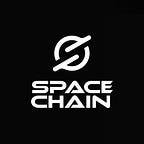SpaceChain Foundation’s Blockchain Hardware Installed on the International Space Station
SpaceChain Foundation is excited to announce that our blockchain hardware embedded with the multisignature wallet technology has been installed on the International Space Station (ISS)! The installation was conducted by astronaut Jessica Meir, who is also a marine biologist, physiologist, and more recently, the participant of the first all women space walk.
Our second-generation blockchain hardware (Fig. 1) is housed in a 1U NanoLab (Fig. 2) that is designed by Nanoracks. Thanks to the modularised features of the hardware, astronaut Jessica Meir is able to easily plug the NanoLab into the research platform via a USB port to power up our hardware. This allows us to send data and command files from the ground station to our ISS hardware, and vice versa. Check out how the full installation was done here.
Why put blockchain in space?
In a standard terrestrial blockchain transaction, one private key is used to complete a transaction which is then broadcast to the network. If that private key becomes known by a malicious entity, all of the funds can be lost. Multisig (multisignature) technology requires more than one private key approval in order to authorise a transaction, rendering the transaction vastly more secure than standard single-signature methods. Furthermore, multisig mechanism provides an effective way of managing accounts/assets that are jointly held by multiple parties. The SpaceChain Foundation implementation adds the remoteness and security of low-Earth orbit infrastructure to multisig to create something entirely new.
“The integration of space and blockchain technologies has uncovered new possibilities and opportunities and we are very excited about the prospect of working closely with financial service providers, fintech and Bitcoin developers, IoT service providers, research institutions and space agencies in the coming months to further accelerate advancements within the ecosystem,” said Zee Zheng, SpaceChain co-founder and CEO.
This opportunity was provided via Nanoracks and their Space Act Agreement with NASA. The launch aboard a SpaceX Falcon 9 took place from the Kennedy Space Center on 5 December 2019. Read more here. With each SpaceChain launch, we are moving closer to our vision of furthering a New Space Economy — enabling space agencies, industries and innovators to access and collaborate in space using decentralised technology.
You can track our orbiting space payloads in real-time with our Node Tracker.
We truly appreciate your constant support. Let’s keep building the New Space Economy together! Stay up-to-date with all of SpaceChain’s exciting developments via Twitter or subscribe to our newsletter here.
